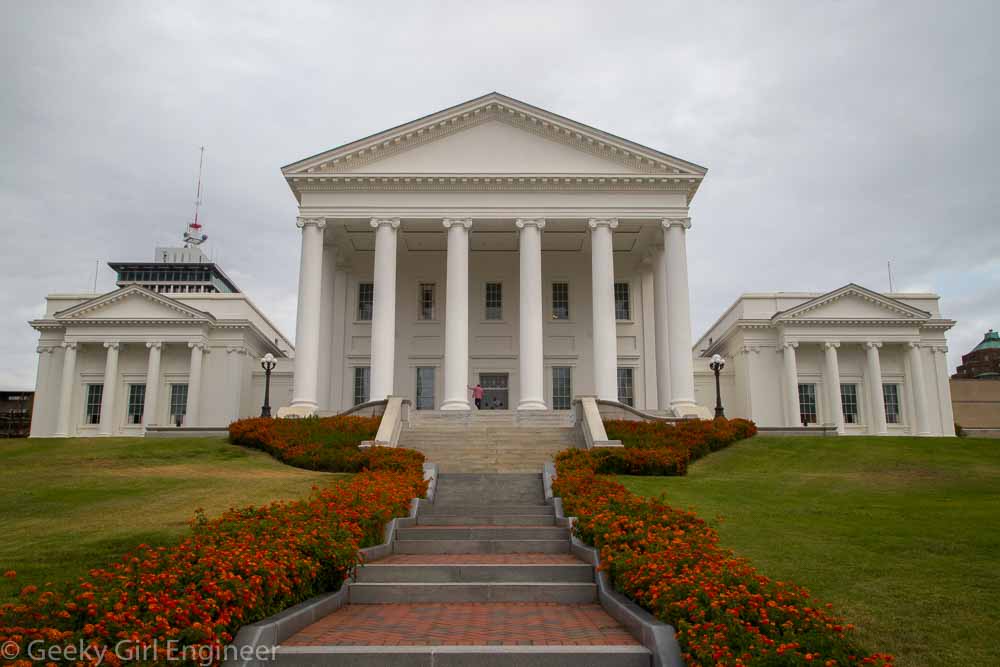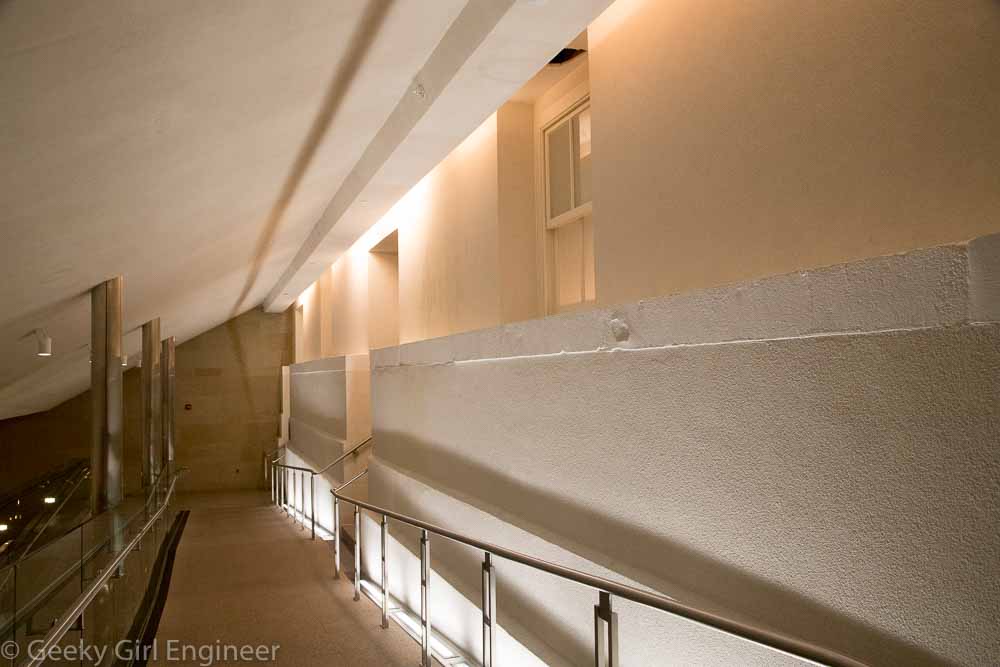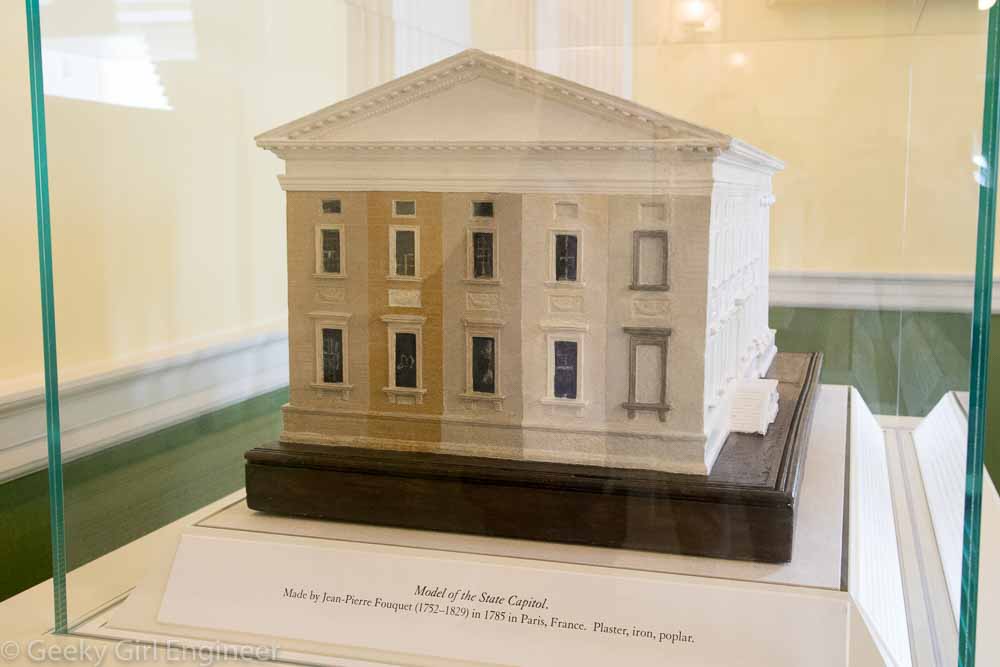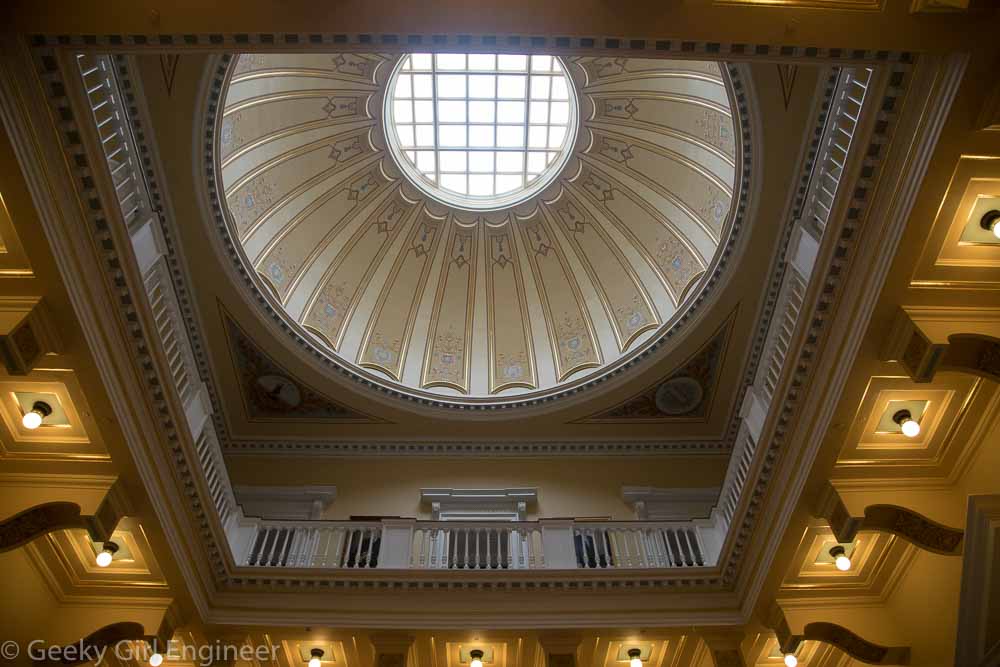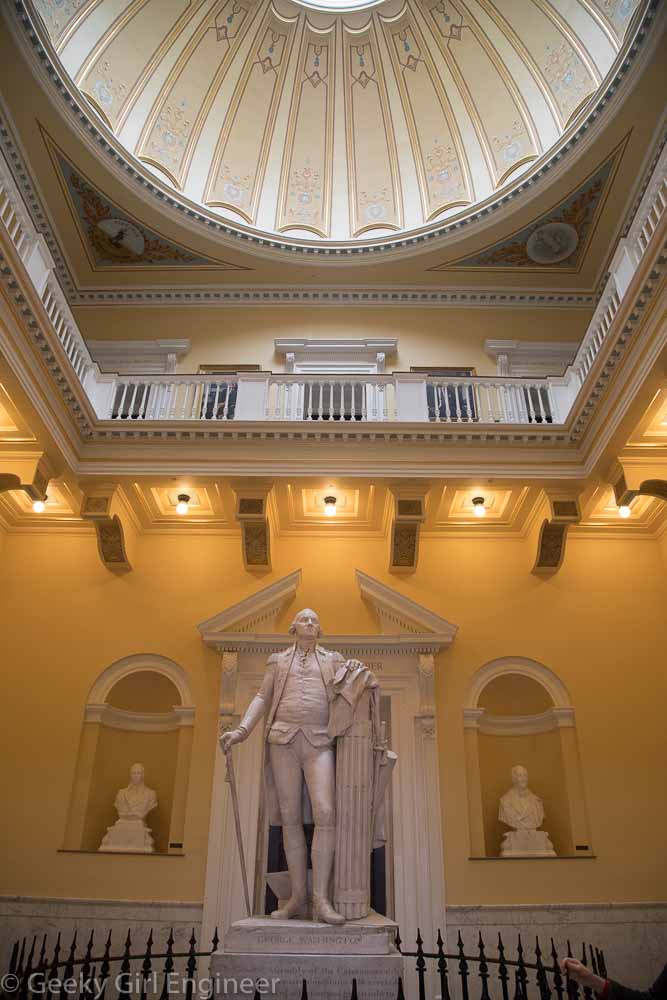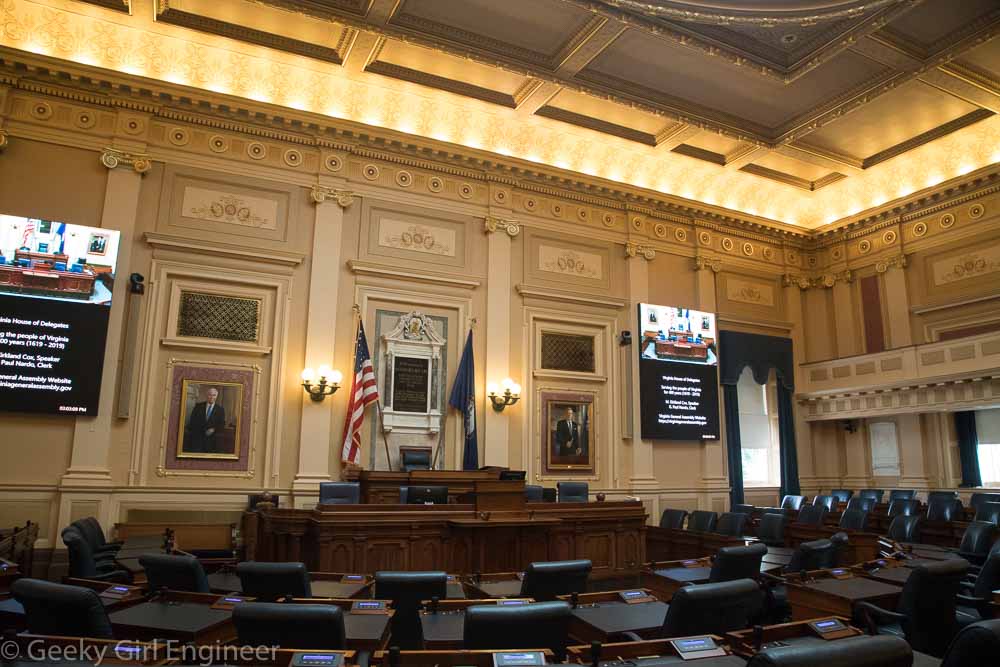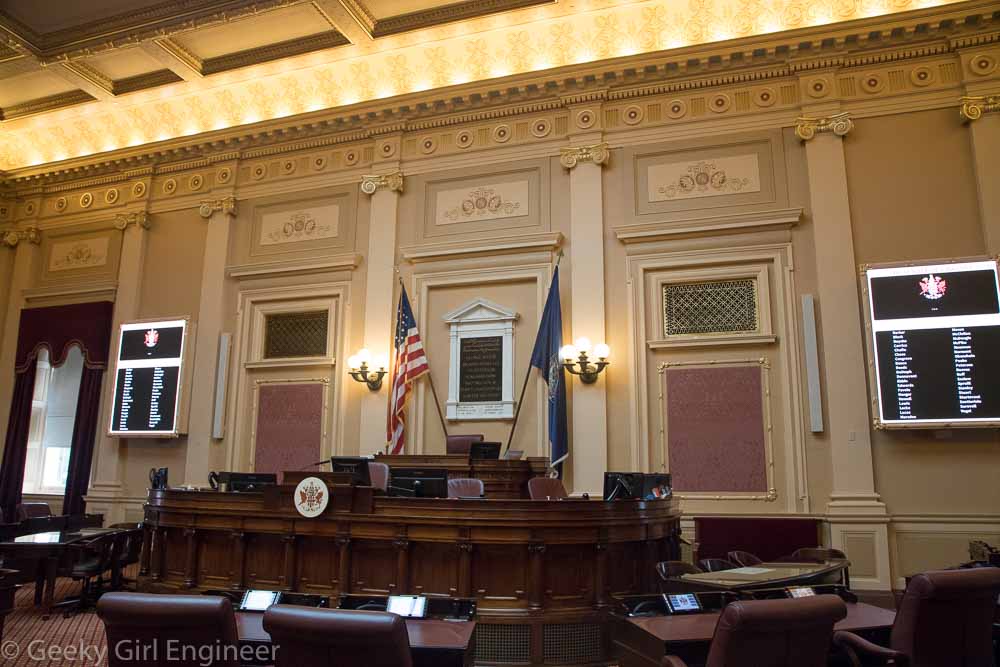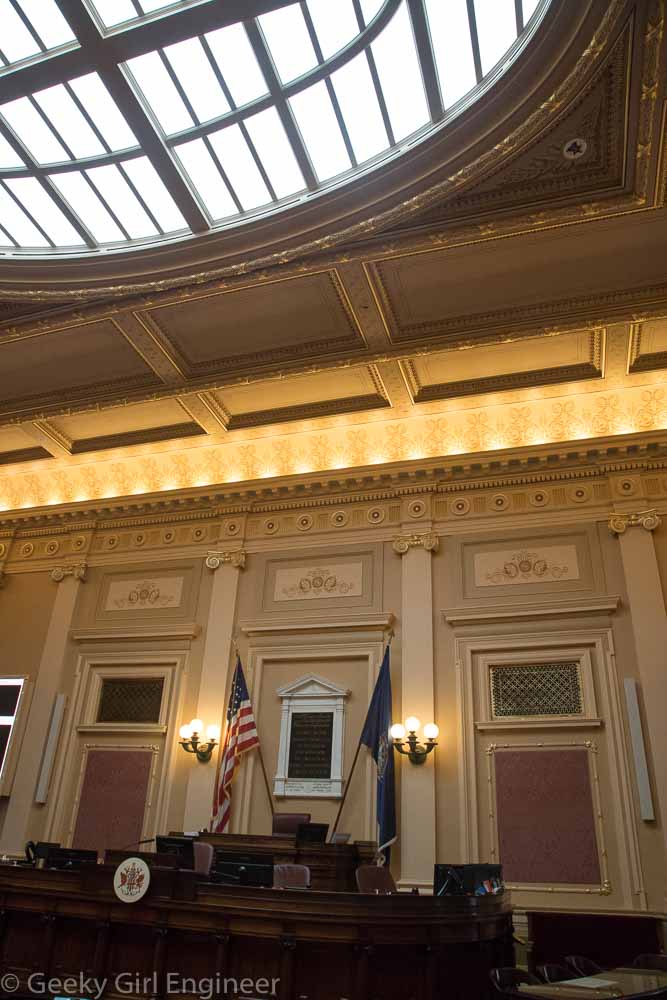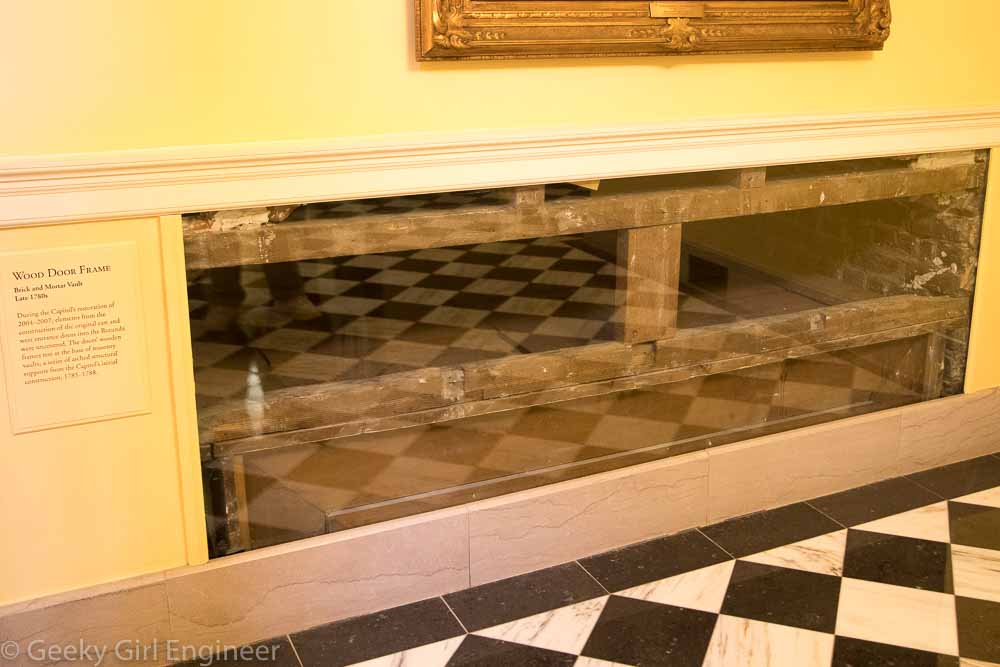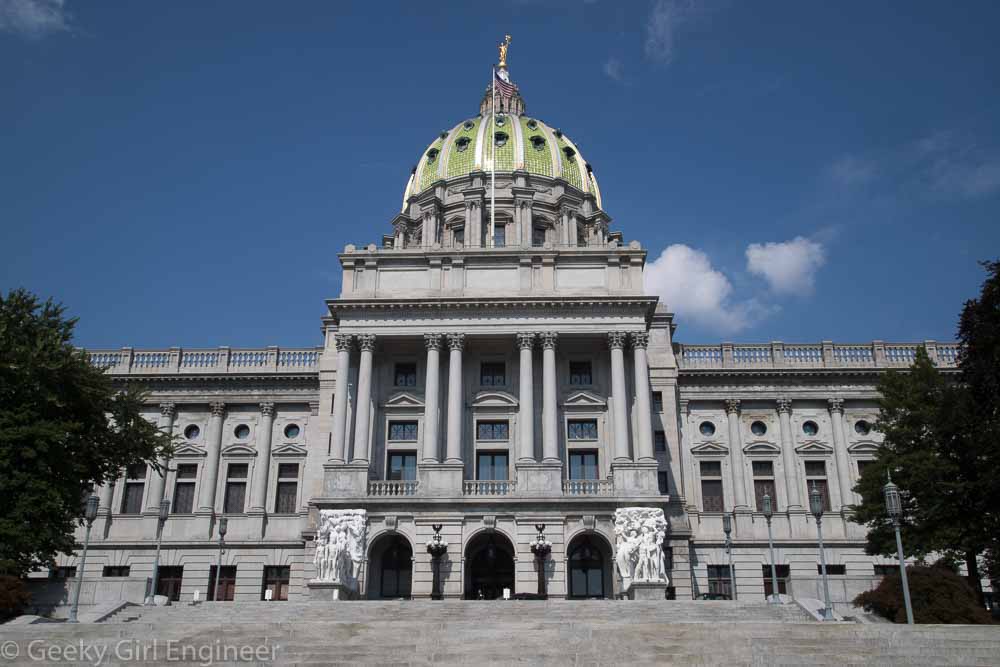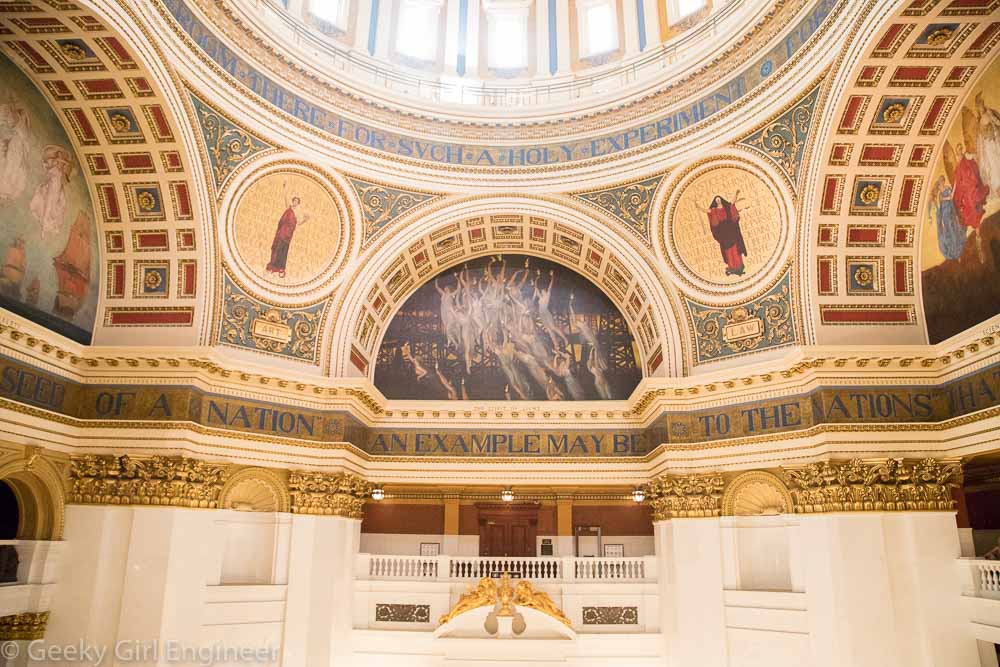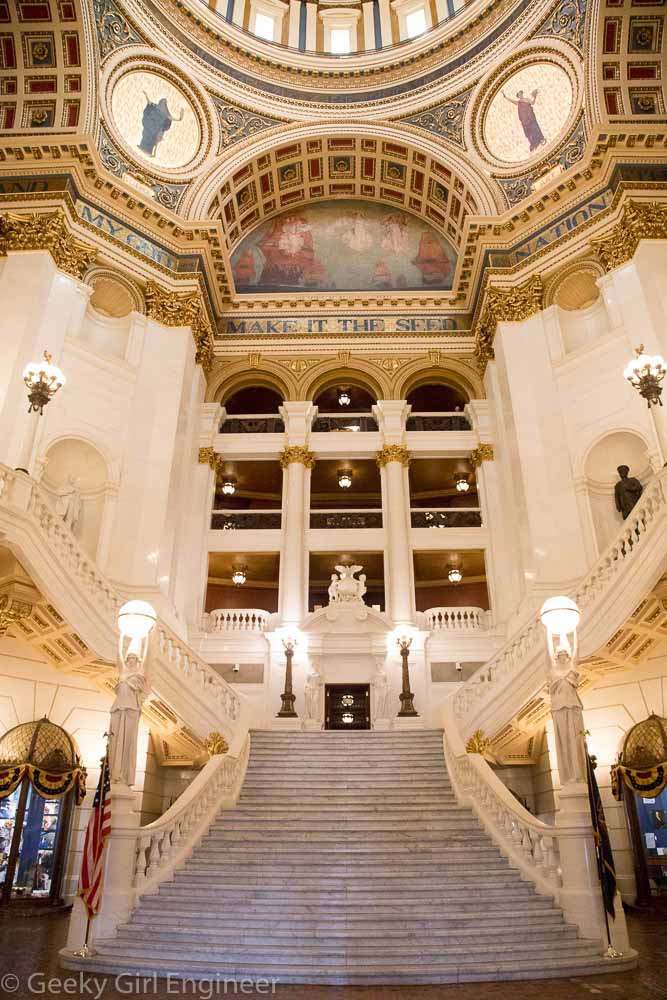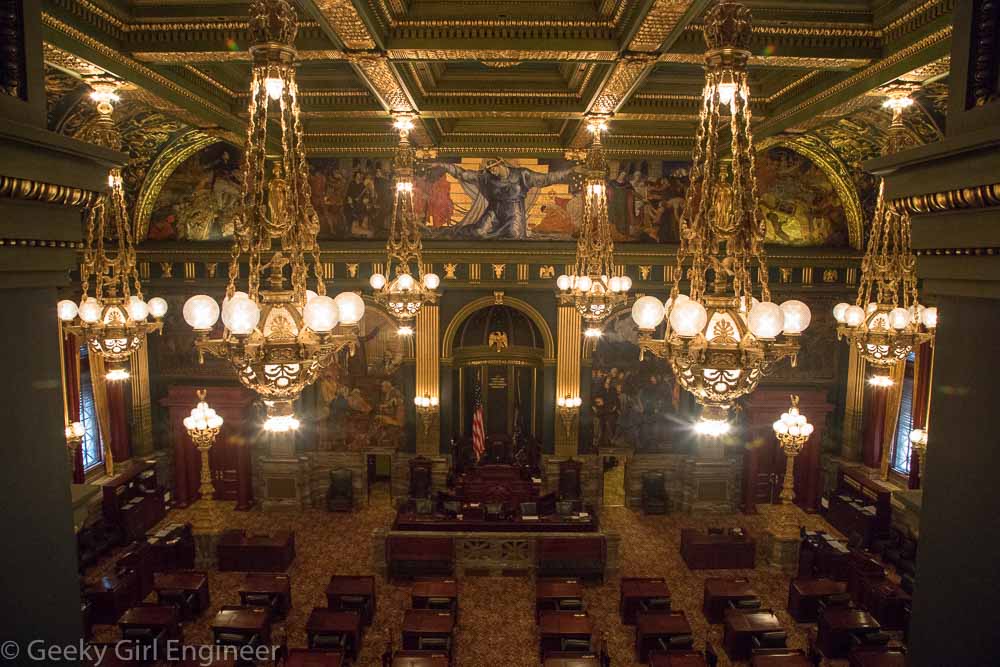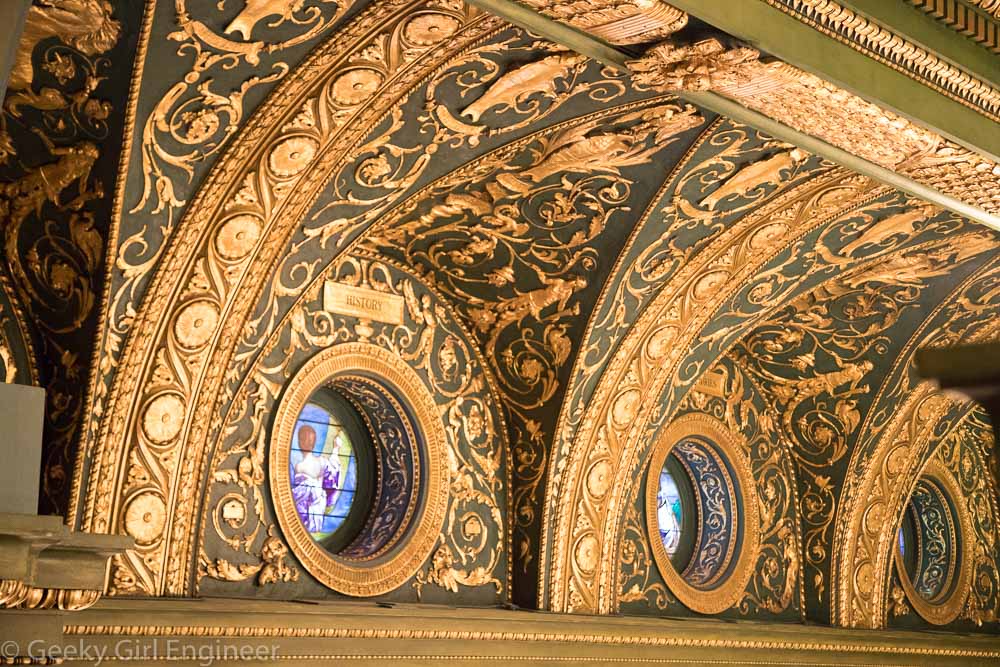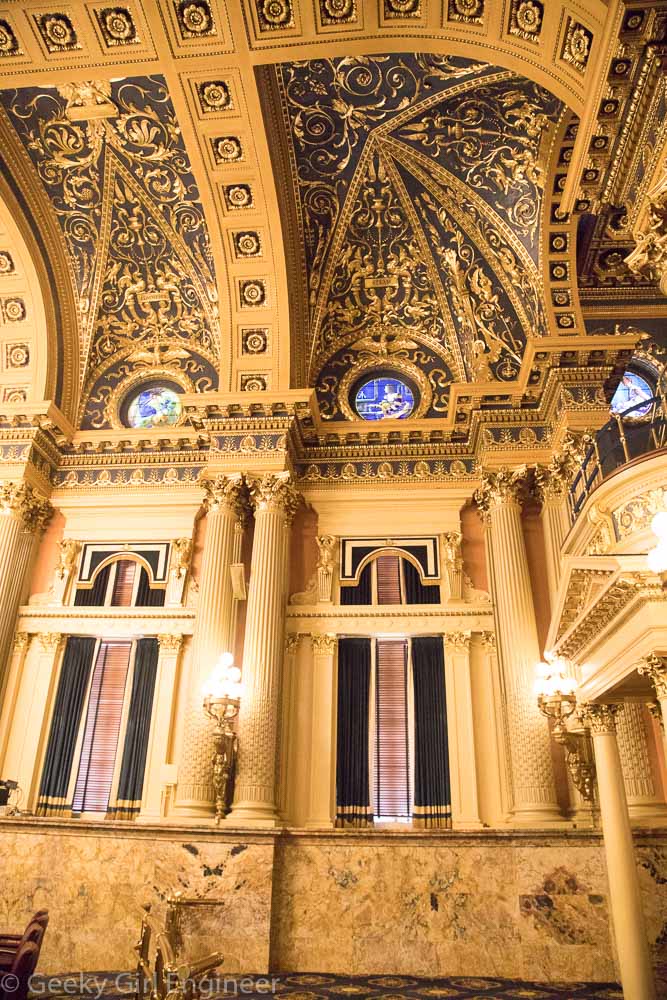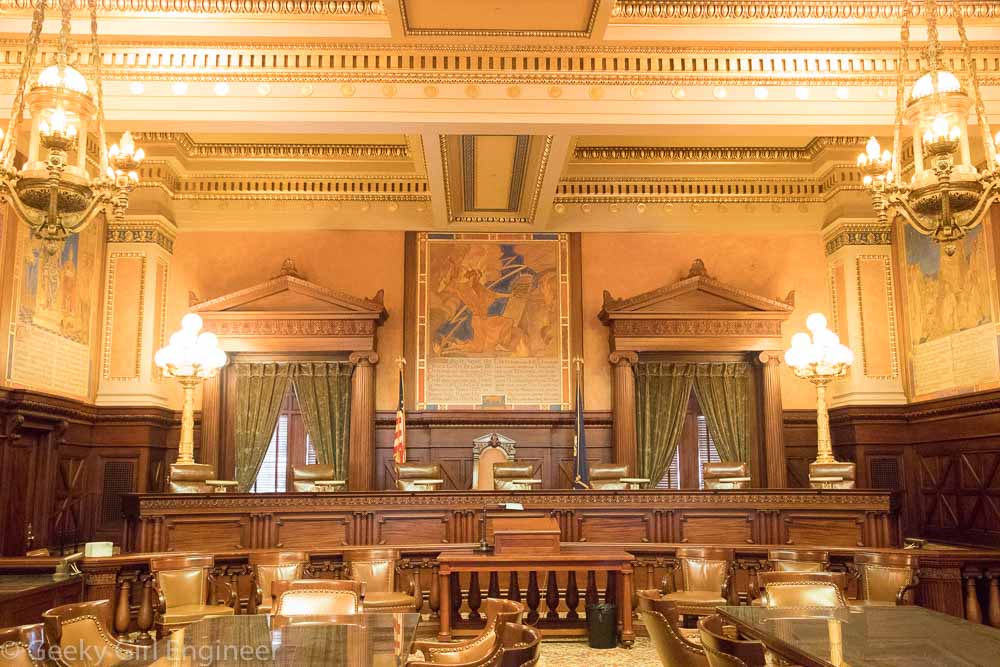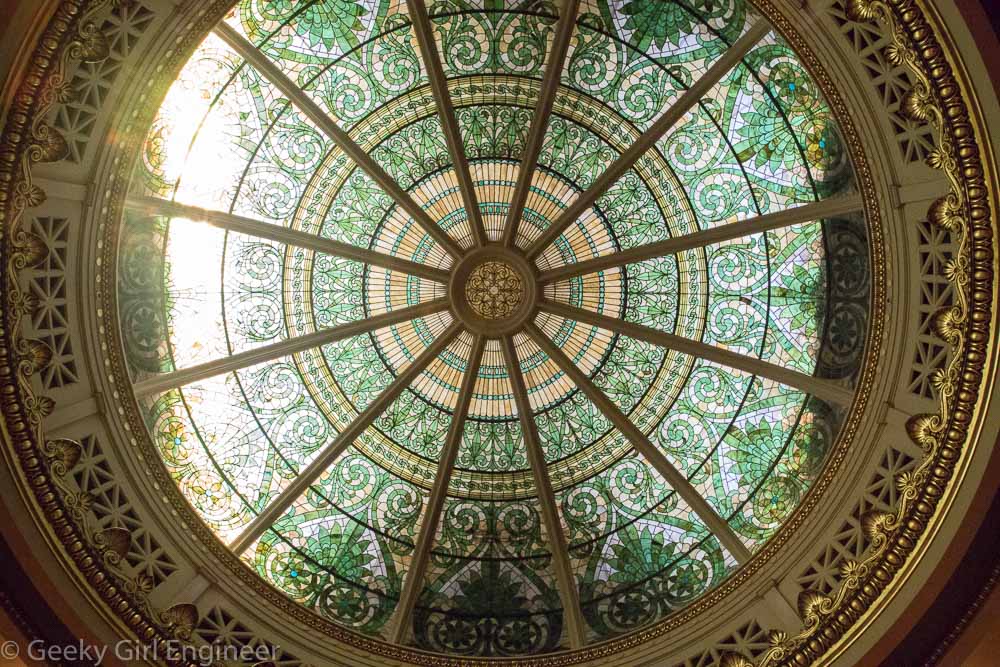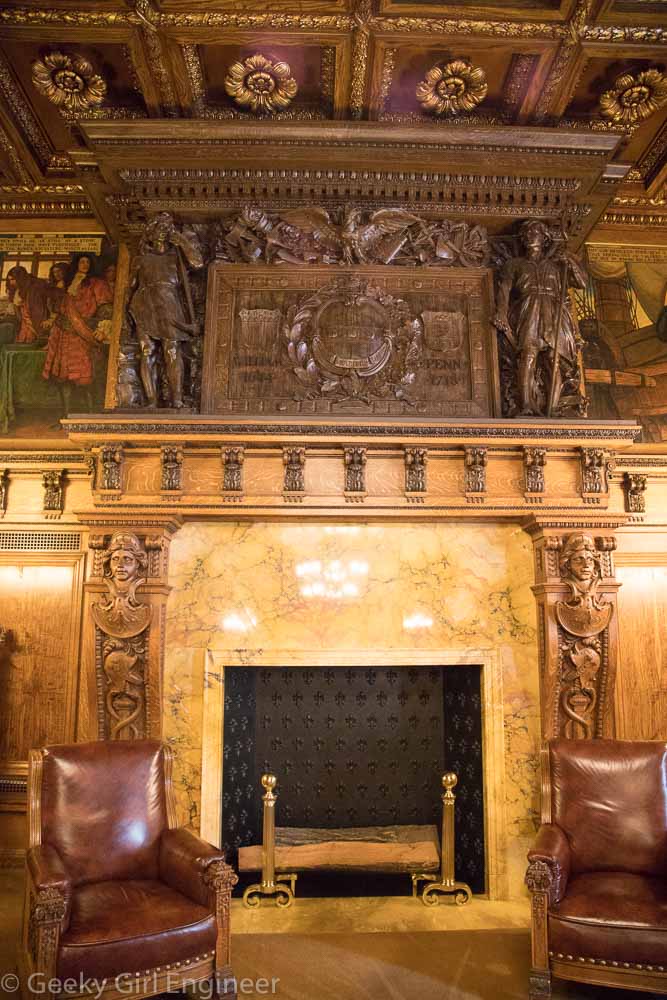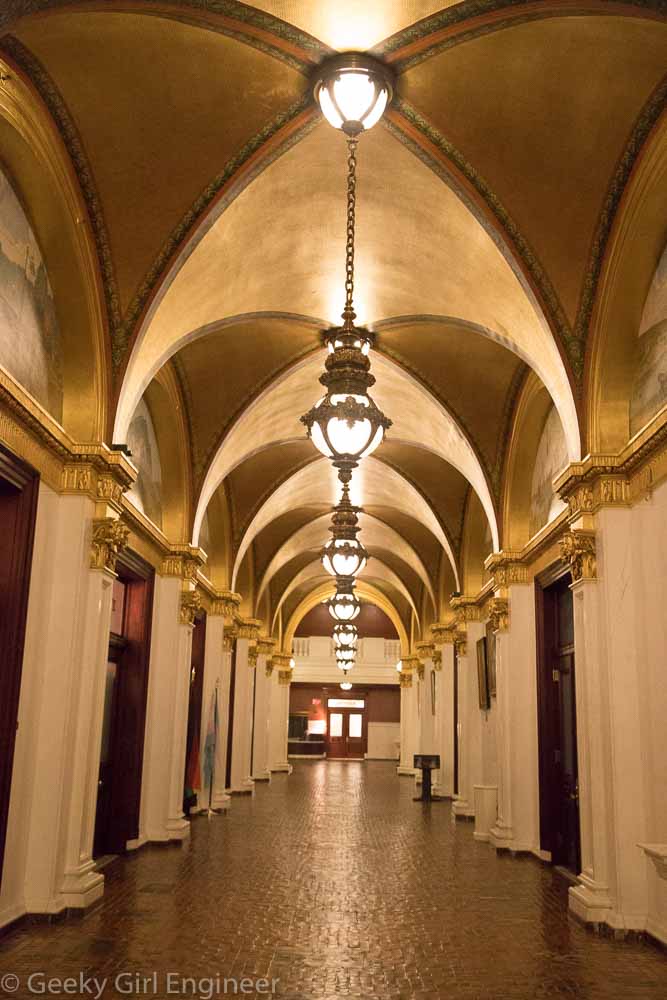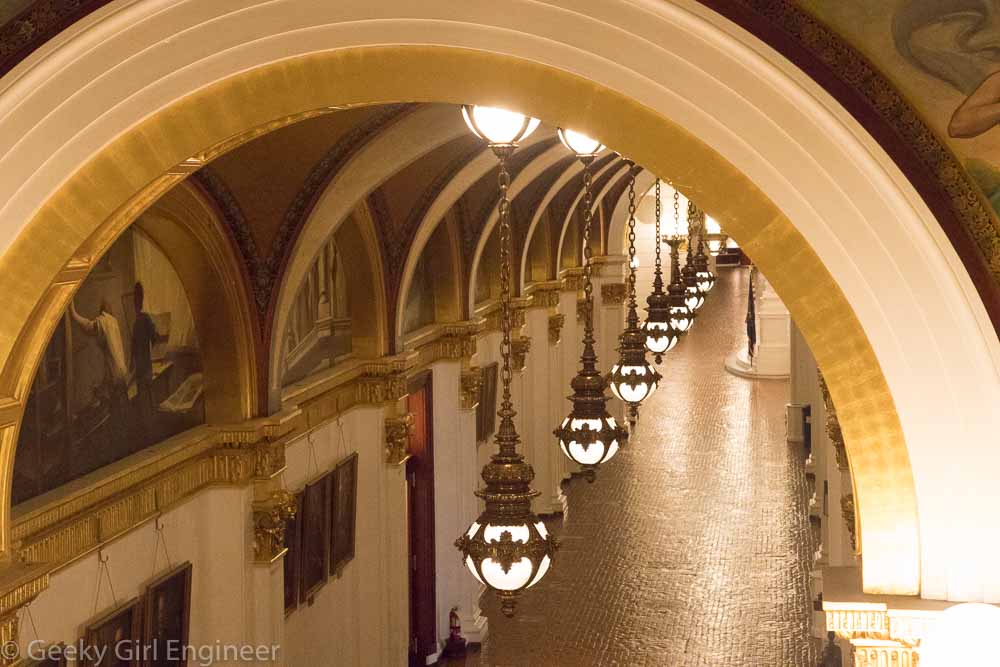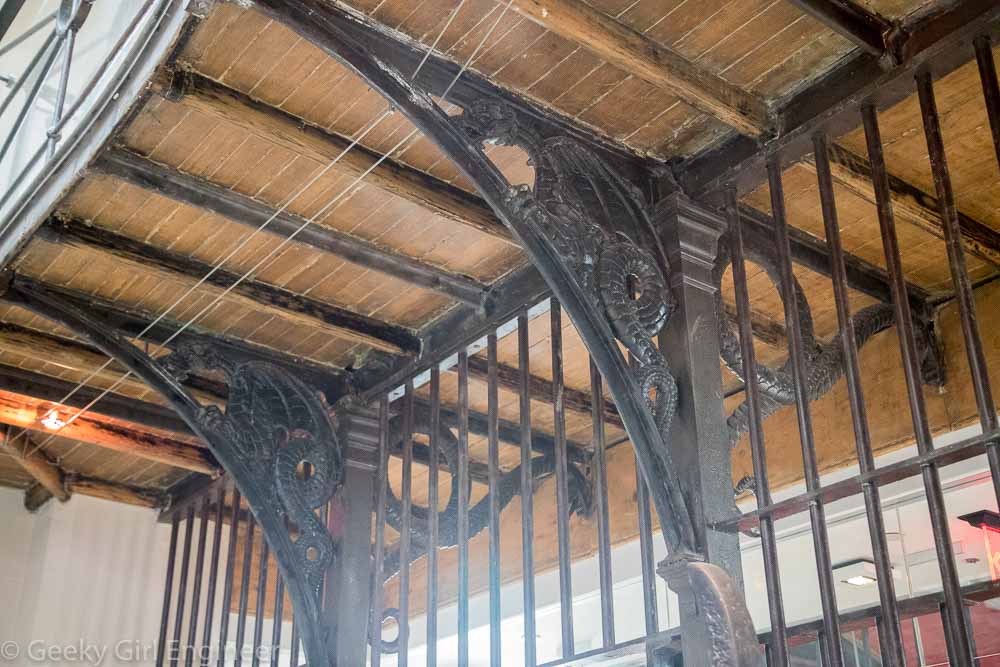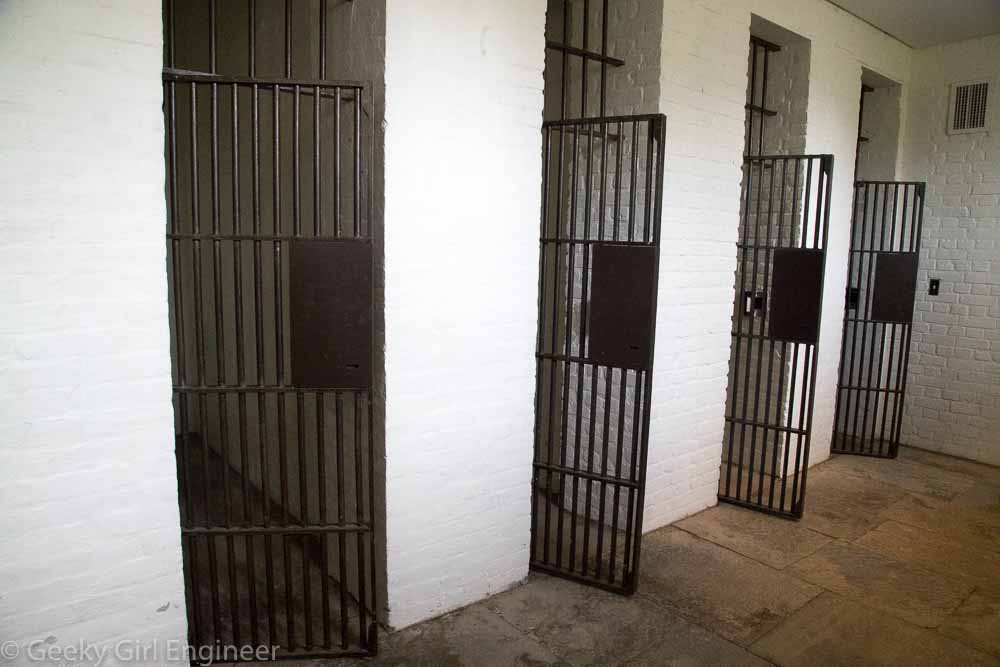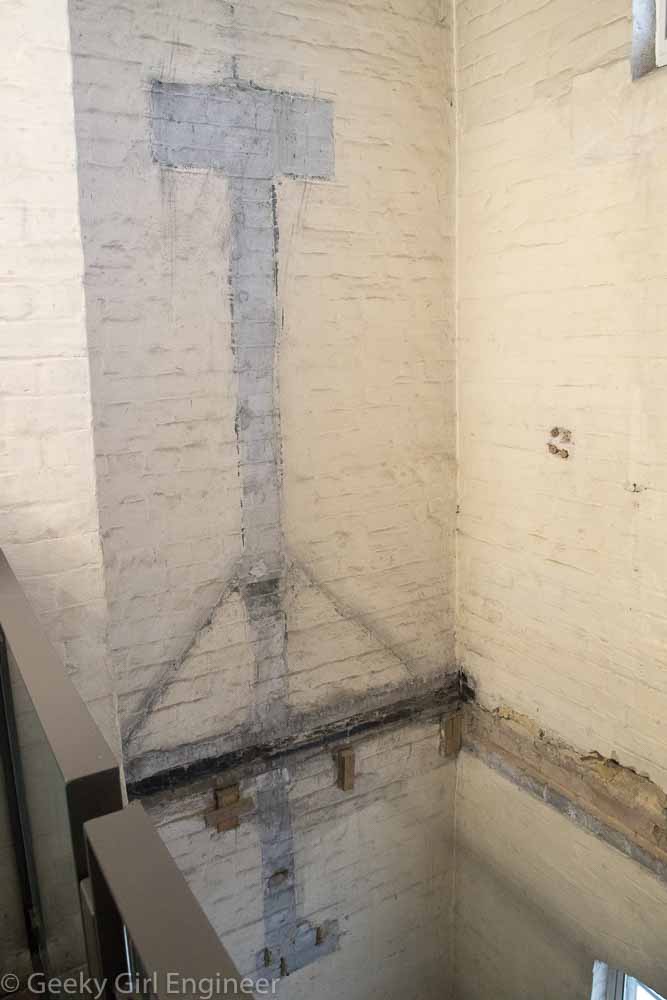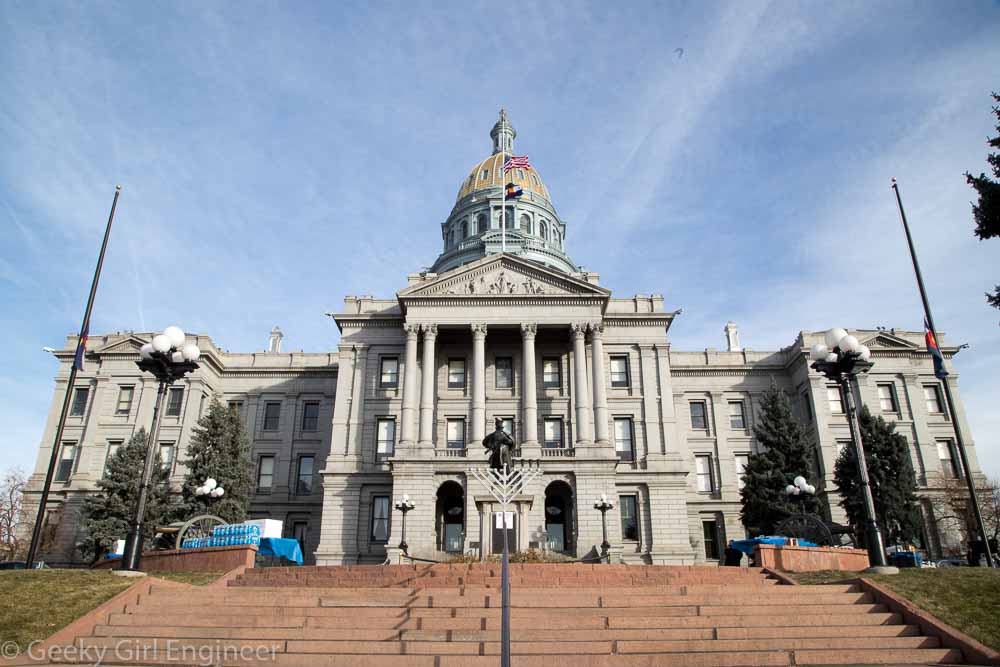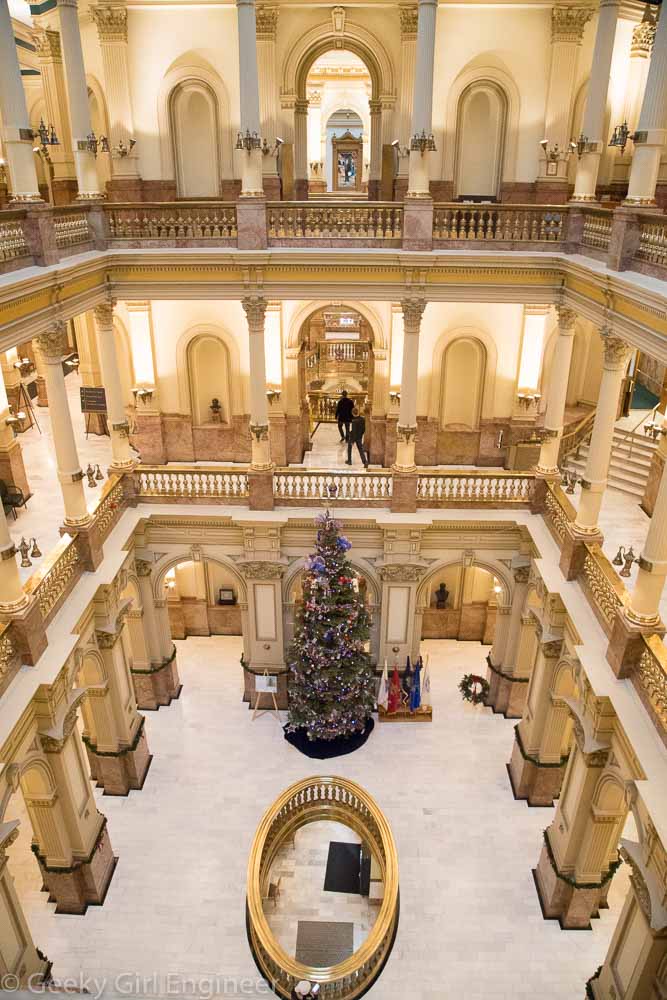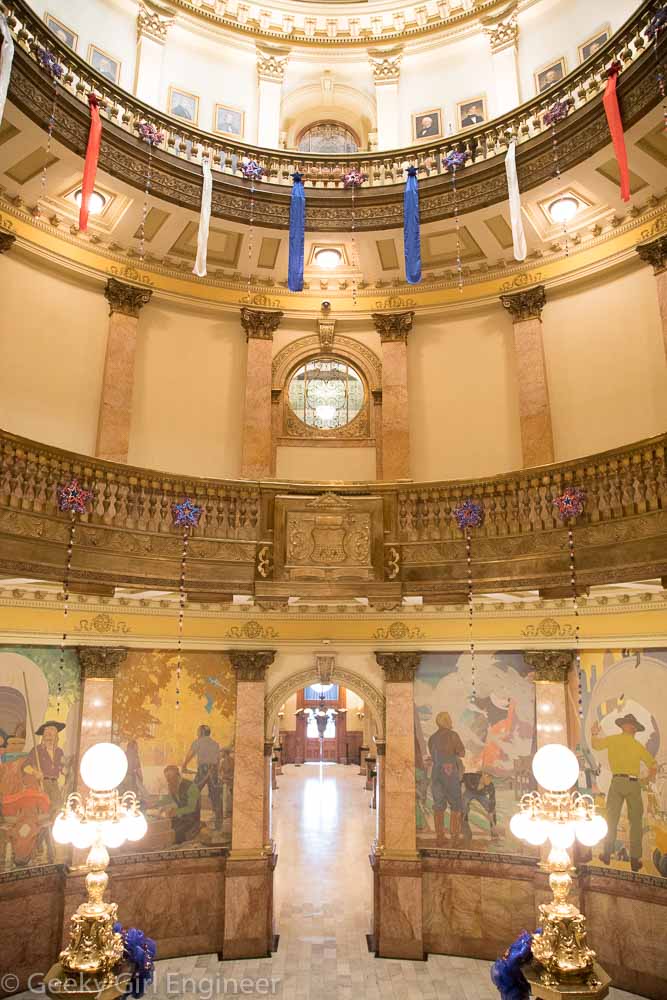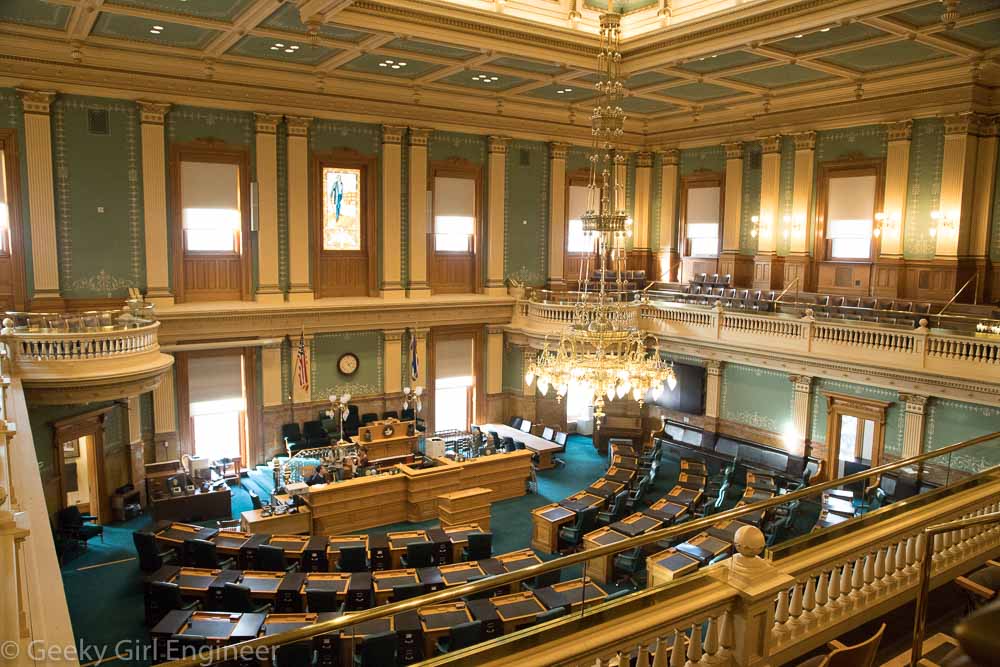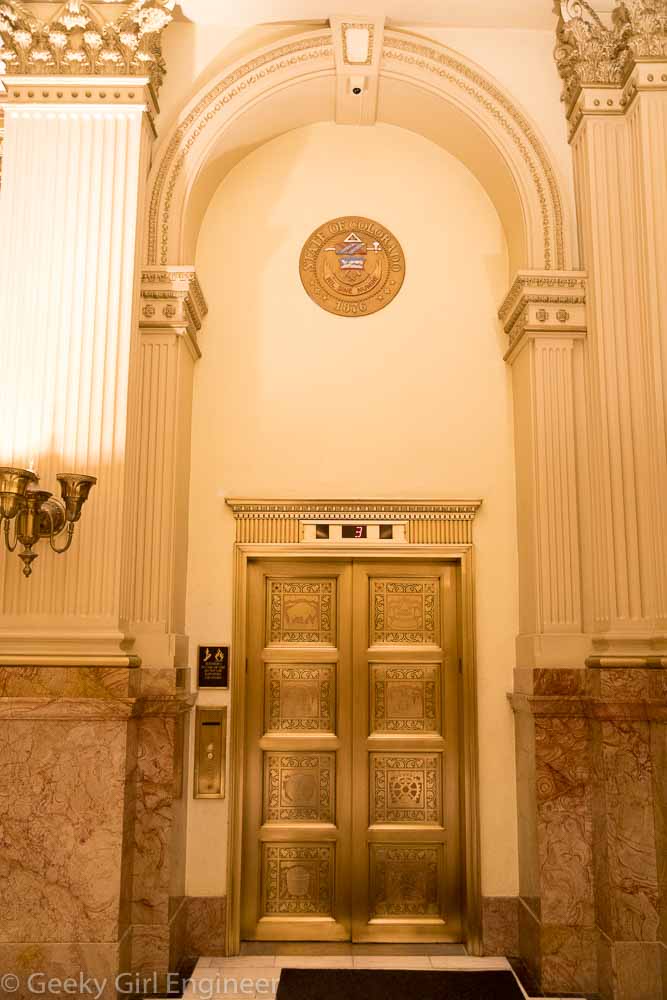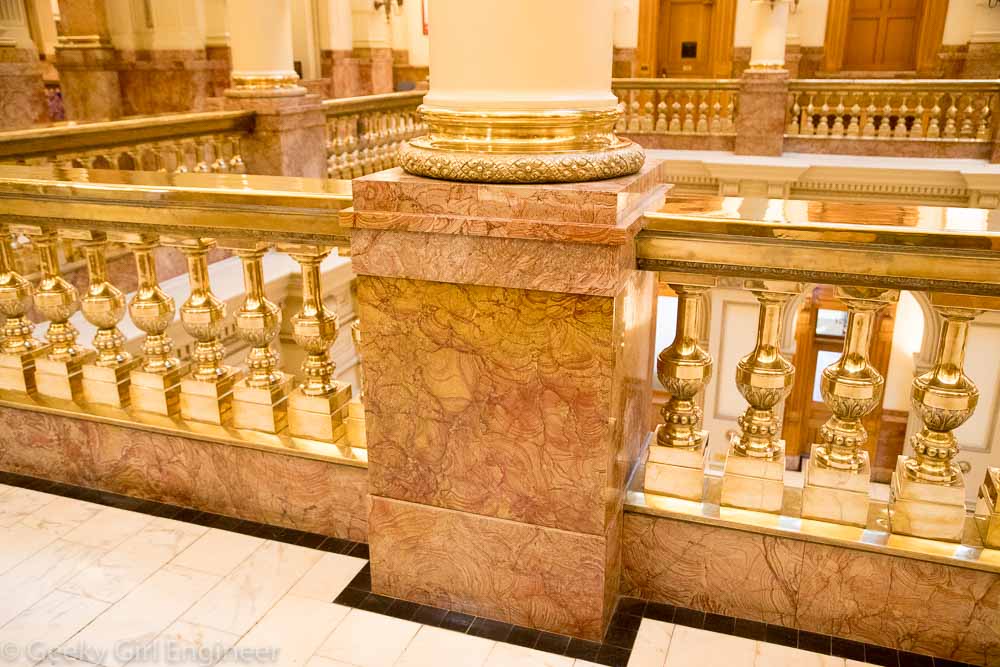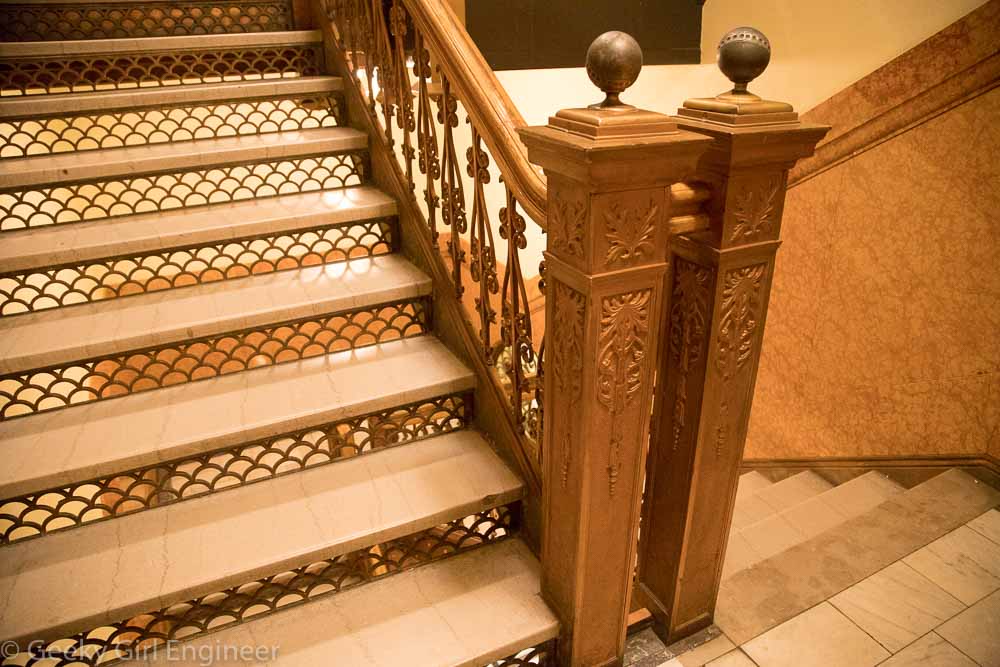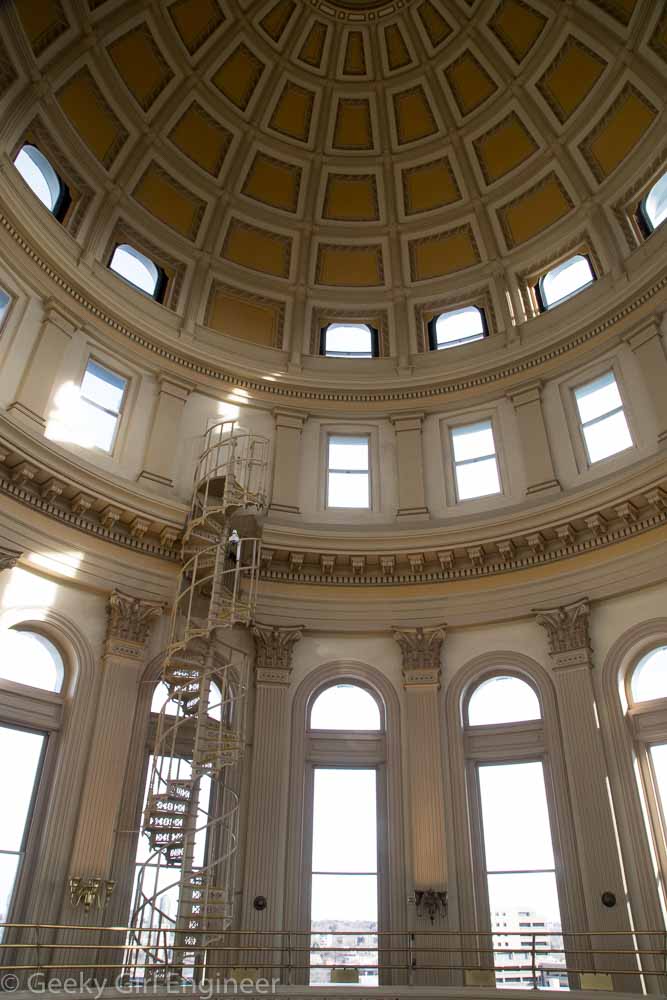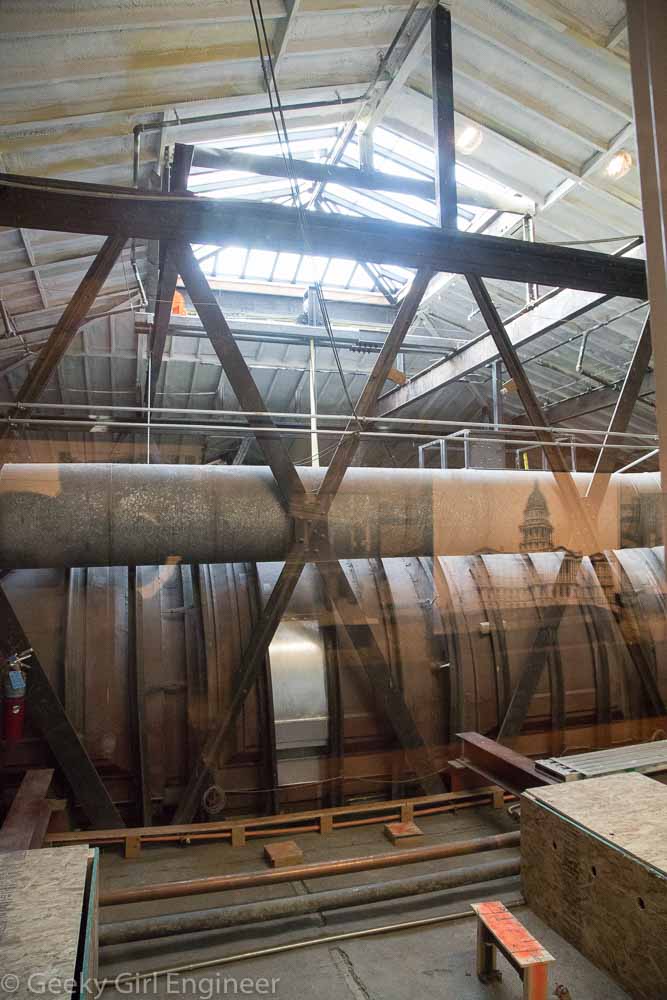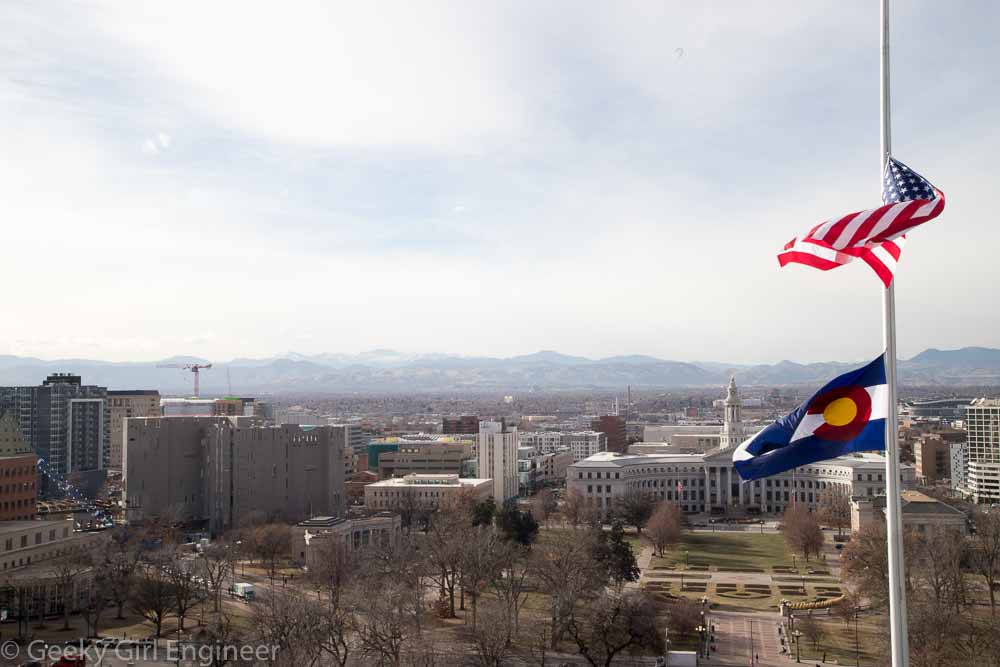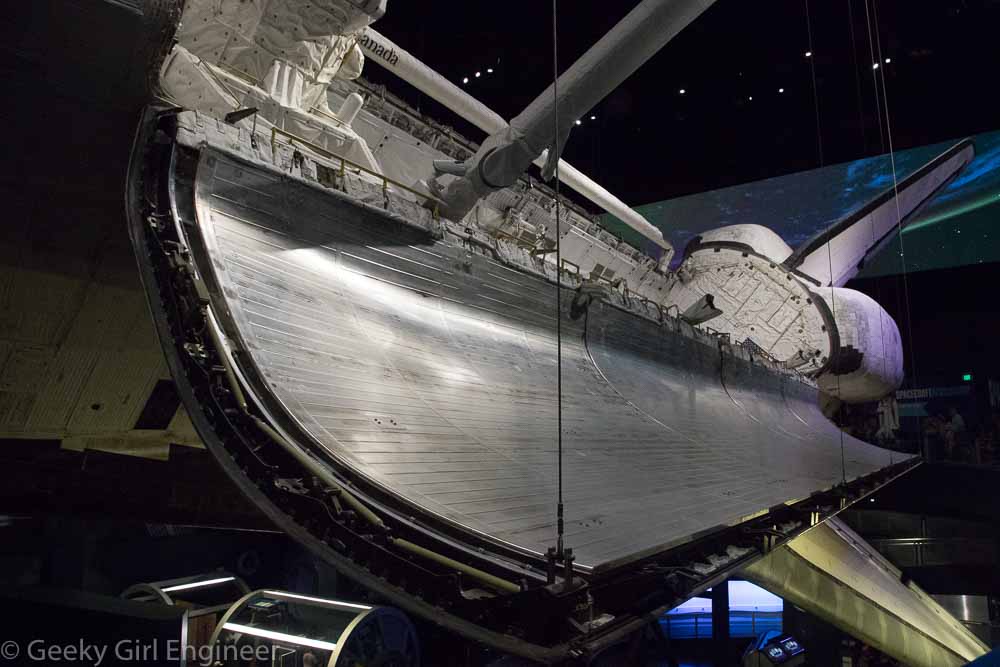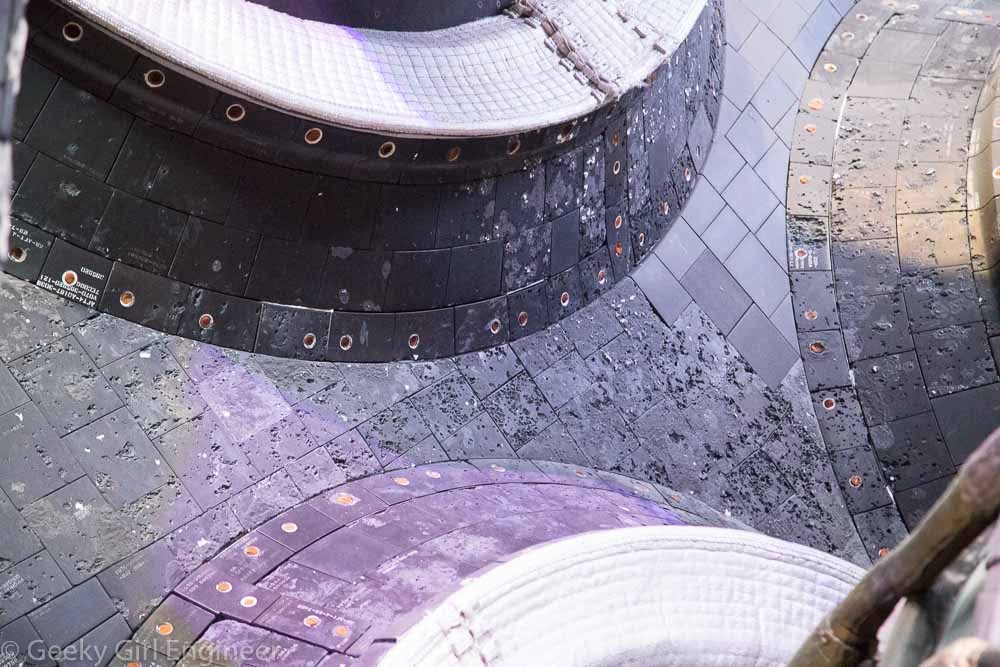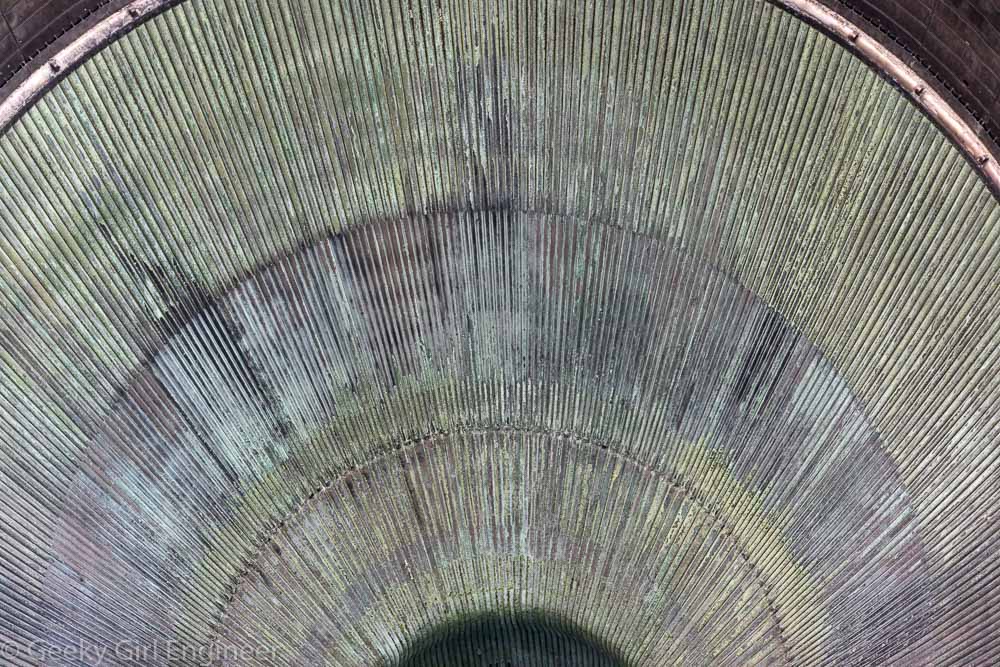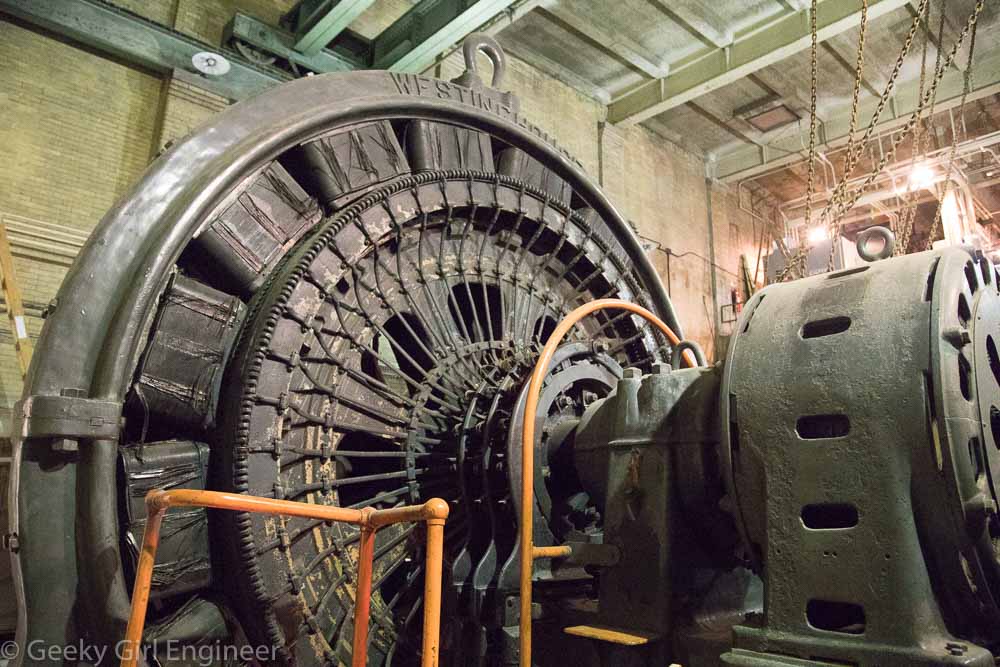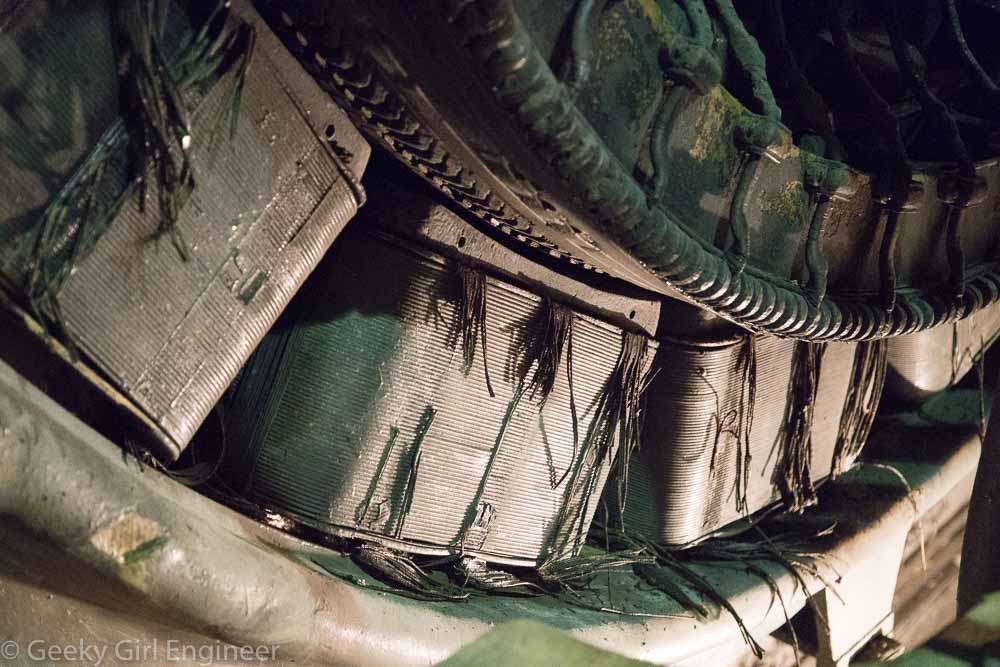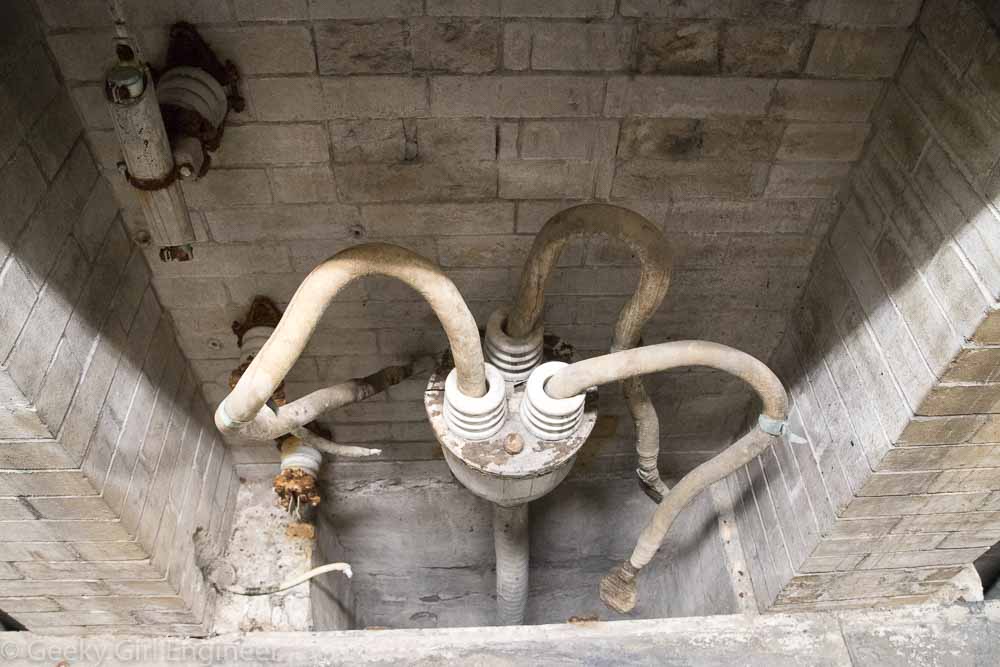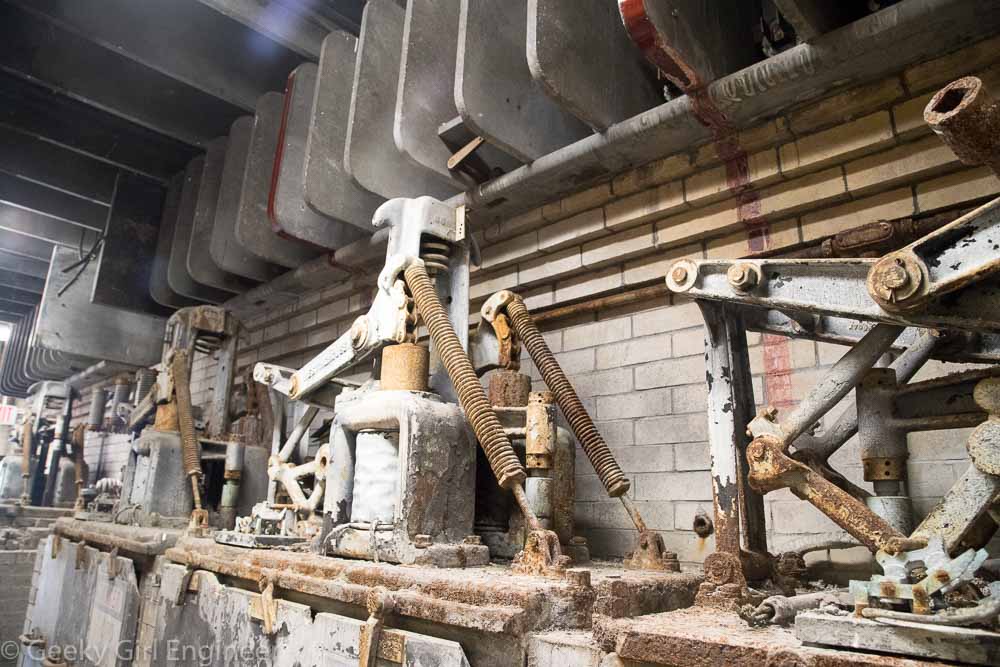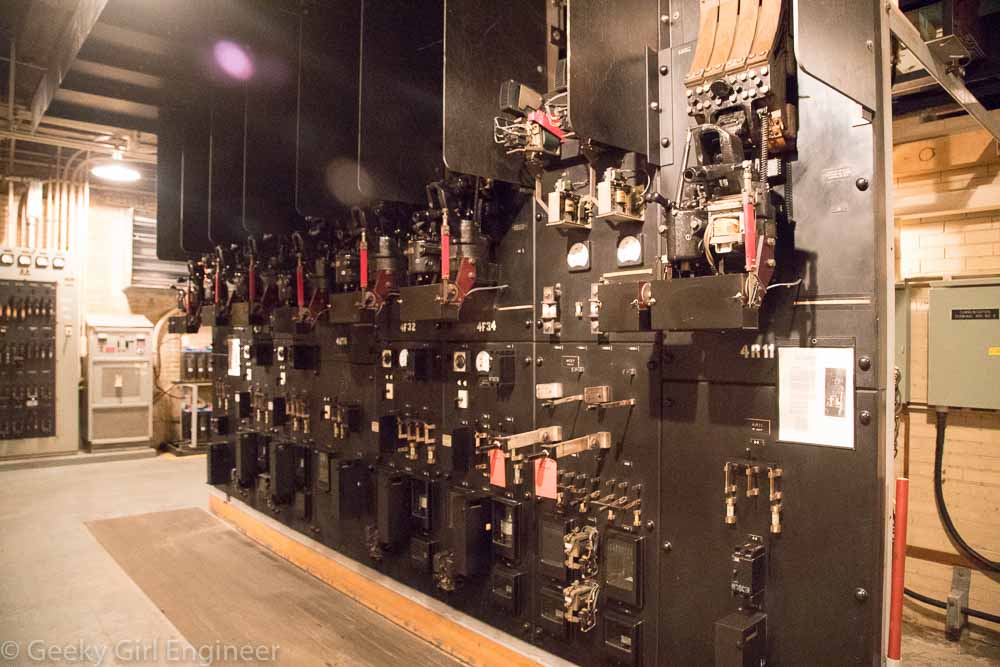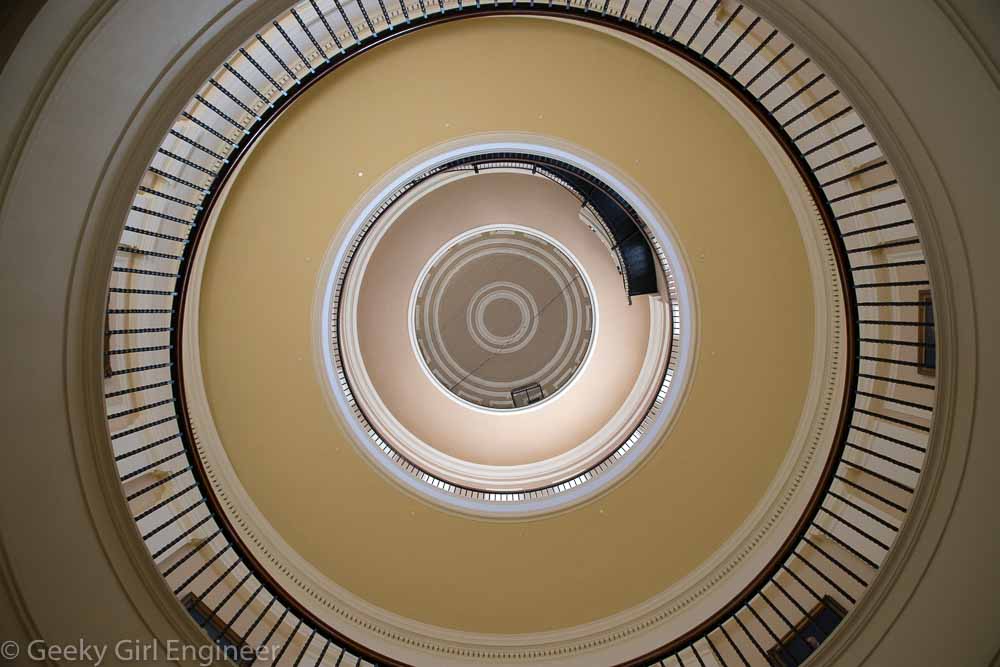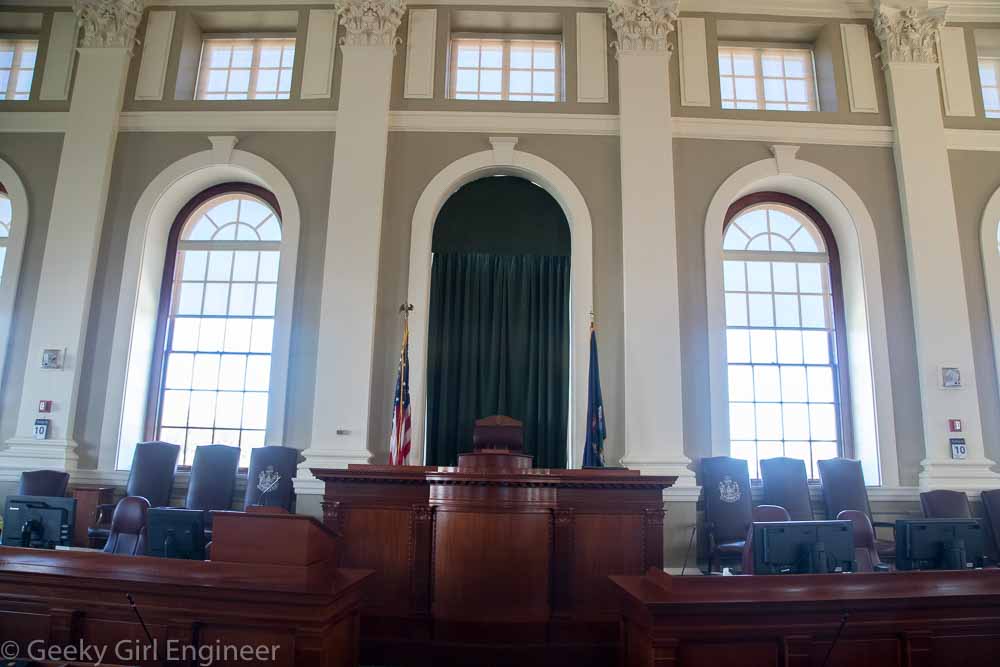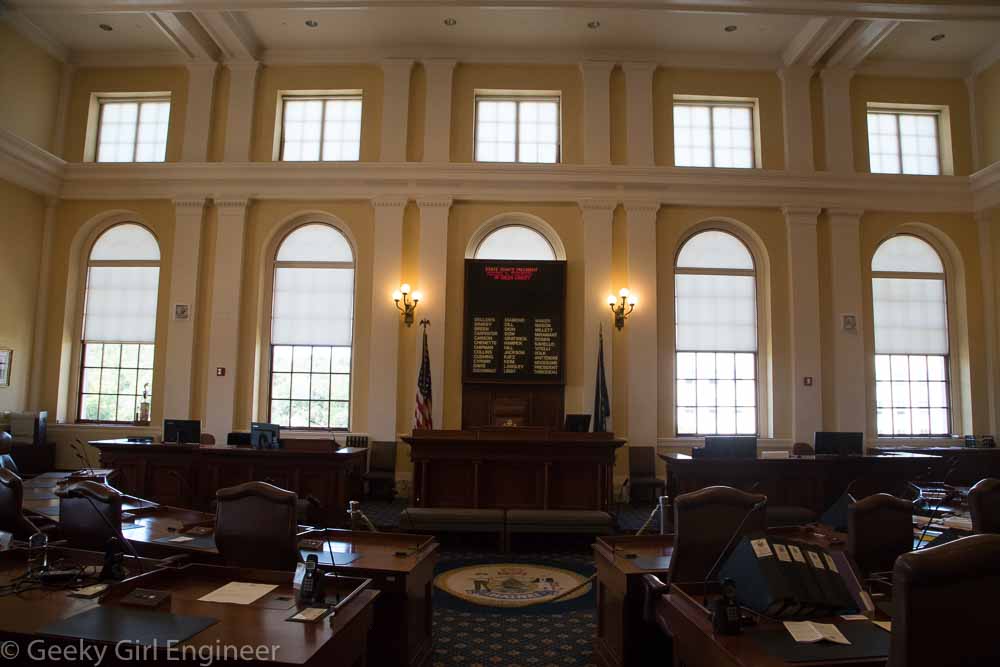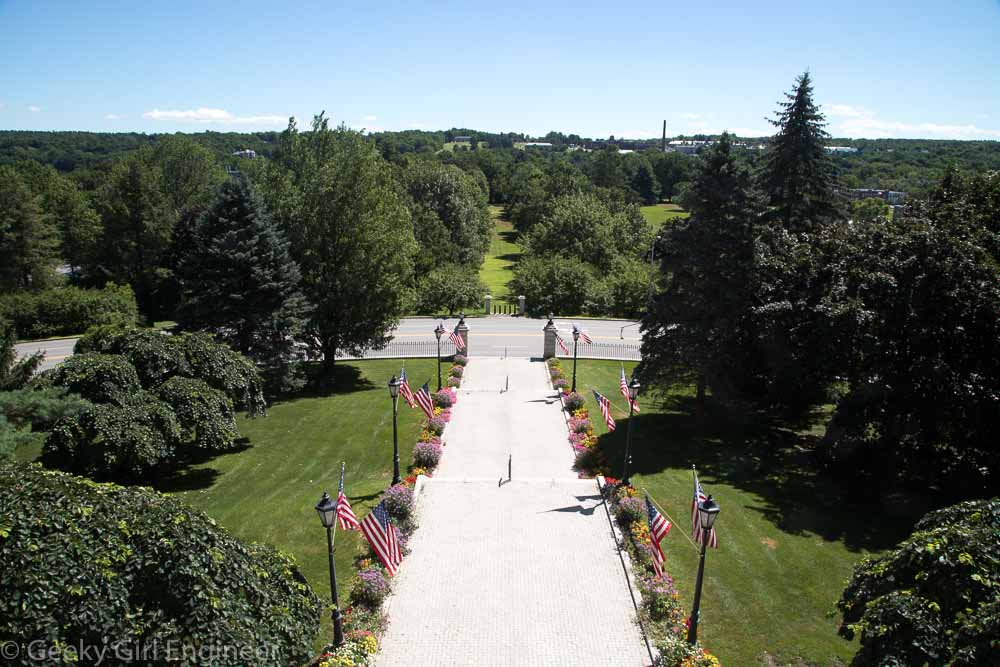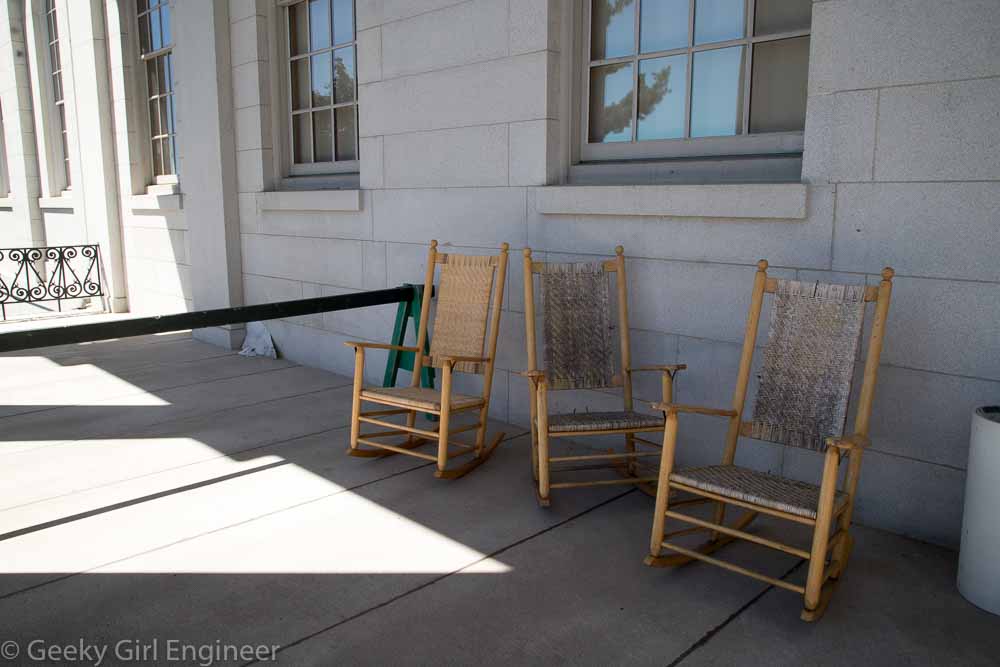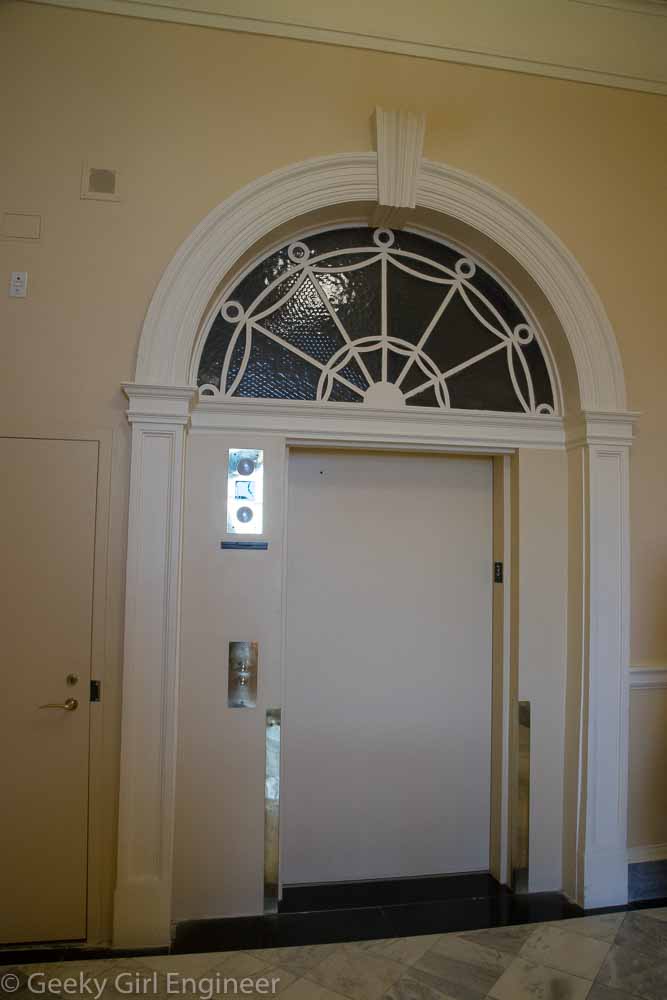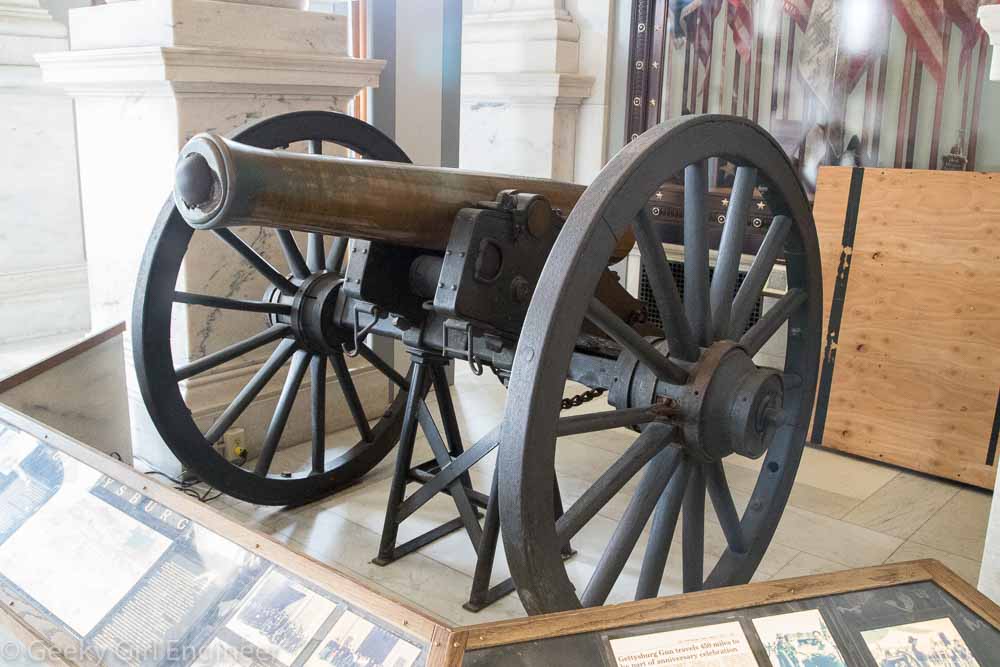I came to Richmond to tour the Virginia state capitol. I took the tour today, and the tour was so bad that as a resident of Virginia, I was actually embarrassed by it. First, the tour lasted a little over an hour, and well beyond half of it was history of the state, not of the actual capitol (with an “o” meaning the building itself). I find it hard to believe that I am the only person who when going for a tour of a capitol or some other building wants a tour of the building and the history of the building, not of the state or people who used to live there. Second, the tour was completely whitewashed. My tour guide did not say the word “slave” once. In her entire hour long recitation of the history of the colony and state of Virginia, she did not think it important to mention slavery once. If she had barely talked about the history of Virginia, I might be more forgiving of that huge gap. Also, I am going to make an educated guess that slaves were involved in building the capitol.
Third, probably because she spent so much time talking about the history of Virginia, she barely had time to talk about the details of the building. She evidently doesn’t show either of the House or Senate chambers, unless the group wants to see one. We all wanted to see one, so she took us to the House chambers. After that I asked if we could see the Senate, she seemed surprise that someone would want to see both. Is it really that surprising that someone who goes on a tour of a state capitol would want to see both chambers, which generally are the most important rooms in the entire building? She said the two chambers look the same, but possibly because others wanted to see it also, she took us to the Senate chamber also. They are not the same. They are very similar, but there are specific differences. The House has green seats and curtains. The Senate has red seats and curtains. I have visited enough state capitols to make an educated guess that that is based on the British Parliament lower and upper house. [See the California State Capitol and Colorado State Capitol among others.] However I have to guess because the tour guide didn’t bother to point it out. Considering she said they are exactly the same, perhaps she did not even realize it. Further, when we were in the Senate chamber, I asked her about some symbol on the ceiling [see below photo] that I had also noticed in the House. She did at least partially explain what it was, but considering how capitols are generally full of symbolism, I found it bizarre that she didn’t talk about it to initially. Also, she never mentioned that there is place near the stair landing a floor above where we were, where they have clear plastic covering a portion of the interior of the building [see photo below]. Even if she was not going to take us there, she could have mentioned it as something we might want to go see. I discovered it by accident while wandering around after the official tour.
Fourth, perhaps this is a dumb complaint, but one of the reasons I take guided tours of the capitols is because generally the tour guides are fantastic, knowledgable, and can tell you all these details you can’t get by just wandering around. In the rotunda, to the side of the dome, the state seal is painted on the ceiling. Only it is not the official seal. The state seal of Virginia, which among other places is on the flag not to mention numerous places in the capitol, features the goddess Virtue, and one of her breasts, including the nipple is showing. The seal on ceiling has both of Virtue’s breasts covered. I noticed this immediately that it looked wrong. I asked the guide during the tour if that painted version was because of the former Attorney General Cuccinelli who made national news when he changed the seal to cover up Virtue’s breast on things in his office. She said no that is the official seal. After the tour, I showed her an up close photo to point out the difference, and I am not sure she even realized that the painted version differs from the version on the flag and on the floor next to the tour guide desk. She had no explanation for the difference and didn’t seem to be interested in a visitor pointing out to her there is a difference. She said that painting has been there for years. So maybe that version has nothing to do with a recent politician, but why is it different? I am very curious. Also of note, when I told to her after, there was a security guard right there, and he was really interested and wanted to look at my photo. Thus at least one other person finds it interesting that the painted seal is different. I am curious about how old the rotunda painting is and the history of the version of the seal. Internet searches are only giving me the version on the flag.
My complaints are not just about this particular guide. I am quite frankly dumbfounded that a normal tour does not allow a visitor to see both chambers. You can’t get into the chambers at all without a guide. In most of the state capitols I have been to so far, you can just wander in to at least the viewing gallery. In Virginia, that is not possible. As a resident of Virginia this strikes me as wrong. It is supposed to be the people’s house, so let the people see it.
